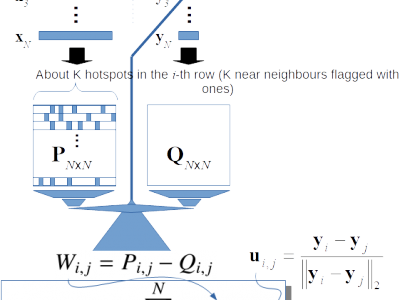Machine Learning
Shoulder Physiotherapy Activity Recognition 9-Axis Dataset (SPARS9x)
Suggested uses of this dataset include performing supervised classification analysis of physiotherapy exercises, or to perform out-of-distribution detection analysis with unlabeled activities of daily living data.
Description:
- Categories:
 1718 Views
1718 Views
CMSO CFAR NN classifier
- Categories:
 96 Views
96 Views
The dataset provides Abilify Oral user reviews and ratings for drug’s satisfaction, effectiveness, and ease of use on different age groups.
- Categories:
 294 Views
294 ViewsThis India-specific COVID-19 tweets dataset has been curated using the large-scale Coronavirus (COVID-19) Tweets Dataset. This dataset contains tweets originating from India during the first week of each of the four phases of nationwide lockdowns initiated by the Government of India. For more information on filtering keywords, please visit the primary dataset page.
Announcements:
- Categories:
 5057 Views
5057 ViewsPT7 Web is an annotated Portuguese language Corpus built from samples collected from Sep 2018 to Mar 2020 from seven Portuguese-speaking countries: Angola, Brazil, Portugal, Cape Verde, Guinea-Bissau, Macao e Mozambique. The records were filtered from Common Crawl — a public domain petabyte-scale dataset of webpages in many languages, mixed together in temporal snapshots of the web, monthly available [1]. The Brazilian pages were labeled as the positive class and the others as the negative class (non-Brazillian Portuguese).
- Categories:
 560 Views
560 Views
Parallel sentences in English and French, with mathematical expressions tokenized. The French sentences were extracted from course notes on error-correcting codes authored by Dr. Monica Nevins, University of Ottawa.
- Categories:
 138 Views
138 ViewsFrom state-of-the-art visualization algorithms, we distill six working principles which are, by hypothesis, sufficient to produce visual projections qualitatively similar to those obtained with these state-of-the-art algorithms. These working principles are presented through the geometrical reasoning of the classical Multidimensional Scaling algorithm, and their effectiveness is illustrated through a novel straightforward algorithm for image visualization.
- Categories:
 122 Views
122 ViewsThe dataset has Gaussian Blobs of varying samples, centers and features. The number of samples ranges from 500 to 50,000. Similarly, the number of centers varies from 2 to 100, while the number of features varies from 2 to 2048. These different sets of Gaussian blobs can be used for testing clustering algorithms for their scalability and effectiveness. There are two kinds of files inside the compressed sets. Files ending with "_X.csv" consist of datapoints, while the files ending with "_y.csv" represent respective class data.
- Categories:
 2869 Views
2869 ViewsThe dataset is composed of digital signals obtained from a capacitive sensor electrodes that are immersed in water or in oil. Each signal, stored in one row, is composed of 10 consecutive intensity values and a label in the last column. The label is +1 for a water-immersed sensor electrode and -1 for an oil-immersed sensor electrode. This dataset should be used to train a classifier to infer the type of material in which an electrode is immersed in (water or oil), given a sample signal composed of 10 consecutive values.
- Categories:
 2308 Views
2308 ViewsOptical Character Recognition (OCR) system is used to convert the document images, either printed or handwritten, into its electronic counterpart. But dealing with handwritten texts is much more challenging than printed ones due to erratic writing style of the individuals. Problem becomes more severe when the input image is doctor's prescription. Before feeding such image to the OCR engine, the classification of printed and handwritten texts is a necessity as doctor's prescription contains both handwritten and printed texts which are to be processed separately.
- Categories:
 22782 Views
22782 Views




